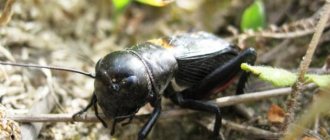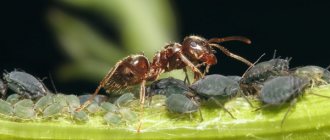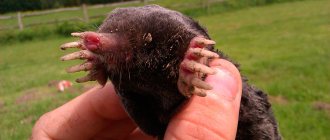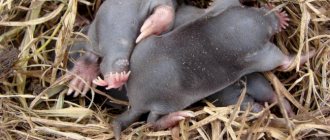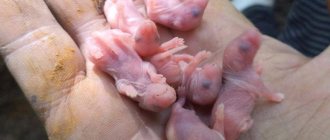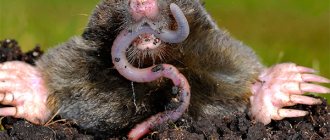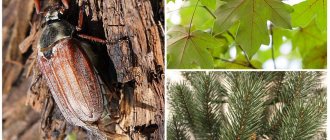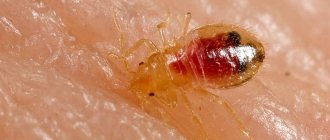Moles: description
Moles represent a family of mammals. If we translate the meaning of the word “Mole”, it means “Digger”. Moles are found everywhere, both in the forest and in open spaces. Due to the fact that its life activities take place in complete darkness, their eyes are underdeveloped, although there are varieties that distinguish light from darkness.
These are soil animals, and they were discovered by small piles of soil rising above the surface of the earth. These hills are also called molehills because they represent traces of mole activity. As a result of studying the animal, it was found that moles have very poor eyesight, but their hearing, sense of smell and touch are developed at a high level. At the same time, it should be noted that the ears of this animal are located inside.
Appearance
Moles, depending on the variety, can have different sizes and weights. Some of the species are very small, since they have a length of about 5 cm, and some of them grow in length up to 2 tens of centimeters, or even more, while the weight can vary between 9-170 grams. The body shape is elongated, covered with short but thick fur, which grows straight, which allows the animal to move without problems in its burrows in any direction. The main color is black, black-brown or dark gray, which directly depends on the variety, as well as natural habitats.
Interesting to know! Moles moult from spring and continue into autumn. The short limbs are armed with wide paws, as well as strong and sharp claws, which allows the animal to dig underground tunnels quite quickly. At the end of the body you can see a short tail.
The mole's head has the shape of a cone, and there are no ears on the head. The nose is slightly elongated and resembles a trunk. There is practically no neck and the body immediately goes into the head. The eye sockets are quite small, and we can say that there are practically no eyes as such, since the lens of the eye and the retina are absent. Despite this, the eyes are closed with movable eyelids. There are varieties of similar animals whose eyes are covered with skin. But moles have excellent hearing, smell and touch. The skull is relatively long, conical in shape. In the mole's mouth, which is closed by fairly thin zygomatic arches, there are from 33 to 44 teeth. The shoulder girdle of moles is wide and powerful, but the pelvic girdle is narrow and long.
Character and lifestyle
Moles prefer to live separately because they do not get along well with their relatives. Despite this, they form pairs to reproduce their own kind. Young moles treat each other well, but as they mature, they begin to sort things out among themselves. Moreover, they can be so irreconcilable with each other that they are ready to bite and then eat. Because of these features, young moles are constantly exploring new territories in order to later master them.
In the event of the death of one of its relatives, living moles immediately become the owners of its tunnels. Moles actively mark their possessions using a special secretion that appears on the fur located in the belly area of the animal. They do this regularly so that none of their relatives thinks that the territory is empty.
Moles spend almost their entire lives underground, digging tunnels in search of food at various depths. If the soil is “light” and loose, then the burrows can be located at a depth of up to 5 cm, and if the soil is “heavy” and dense, then the burrows can be located at greater depths. Females build their nests at a depth of up to 2 meters, and they can be under stumps, under tree roots or under stones. Where there is a mole's nest, a hill of accumulated soil can be up to 80 cm high. The nest, as a rule, is covered with dry grass or other natural components.
Moles are constantly on the move in search of food items, since digging holes requires a lot of energy, which must be regularly replenished. With the onset of spring, when there is a lot of moisture, moles try to move to higher ground, but with the arrival of summer, when excess moisture leaves, moles easily move to lowlands. Moles can live their entire lives within their areas. When the weather gets hot outside, moles move closer to streams or rivers to quench their thirst.
Interesting moment! Due to the peculiarities of the structure of the coat, the mole moves equally quickly through its underground passages, both forward and backward, and does not have to turn around.
Moles rest several times a day, for a couple of hours. In winter, they do not sleep and continue to dig holes in unfrozen ground. Despite the fact that they are mostly underground, they can be in danger the moment they release soil to the surface of the earth. Naturally, such cases are quite rare.
How long do moles live?
Their lifespan depends on various factors. Moles often die from disease, as well as from predators such as weasels or martens. Parasites are capable of infecting these animals with a very dangerous disease, such as piroplasmosis.
The average lifespan of moles is about 4 years , although under favorable conditions they can live longer.
Molting in moles
The coat of an animal, due to the peculiarities of its life activity, quickly loses its functions, so the molting process takes place in spring, summer and autumn, but in winter this does not happen, since moles, although they dig, do so very little. The places where new fur has grown are darker, and the fur is almost 3 times longer. At the same time, these places begin to be wiped off much faster, since they are in more contact with the surface of the underground passages.
The first molt begins in April and can continue until the beginning of summer. Females molt first, followed by males. New wool grows in place of old, winter, worn-out wool. Mid-summer is characterized by the fact that these animals begin their second molt, while young moles undergo their first molt. After the summer molt, the autumn molt begins immediately, after which the moles grow the highest quality coat. Therefore, after this molt, the coat becomes thickest, tallest, shiny and velvety. The main color is black with a silver tint.
Interesting facts about Moles
What else can be included in the diet of a dungeon dweller?
If a mole in its feeding passage discovers any living creature that is smaller in size and with which it is able to cope, it eats it.
For example:
- The mole eats the mole cricket - this is a large and therefore nutritious insect, which, moreover, is low-hazard and non-toxic, and serves as an excellent snack for the animal. Partly due to this, the mole is not such an unambiguous pest in gardens and summer cottages - sometimes the benefits of its feeding on mole crickets exceed the damage it causes to the beds;
- Moles even eat mice. Of course, they are not purposefully looking for them, but when, digging a new tunnel, a mole “breaks into” a mouse nest with little mice, the fragile animals almost always serve as food for an insatiable predator. Moreover, even adult mice that run into underground passages can be eaten by a mole, although this happens very rarely, since the mice are too agile and manage to escape;
- Lizards, frogs, small toads and snakes also often become victims if they fall into wormholes and meet the “master of the dungeon” in them;
- Moles also eat spiders, even large and poisonous ones, such as tarantulas, but, again, much depends on the ability of the potential victim to quickly escape from the predator. The situation is similar with ants - the mole eats them as it moves, without stopping too much.
On a note
The feeding passages of moles themselves are a kind of traps into which various victims of these animals often fall. Spiders and centipedes crawl into them, earthworms burrow into them, small mammals run in, and lizards hide. One of the important tasks of moles is to regularly check the dug passages, and if suddenly they stop “catching” the required amount of food, dig new “traps”.
In rare cases, moles can eat their own brothers. These animals are very aggressive towards other individuals in their feeding area, and when they meet, conflicts and fights occur between them, sometimes ending in the death of one of the animals. The winner does not show much scrupulousness, and can quite calmly eat the defeated opponent.
It is also useful to read: Do moles have eyes and do these animals need vision underground?
Accordingly, when faced with a shrew smaller than itself, the mole will try to diversify its diet with it.
Thus, in nature, the mole feeds not only on insects or worms, but on almost everything that moves, and with which the generous soil deigns to please it.
Various remains of plant food, which are found in the stomachs of moles during autopsy, enter the animal’s diet only sporadically, often by accident - during continuous digging of underground passages and eating worms and insects among the roots of plants. In general, plant food is not significant for the animal.
Types of moles with photos and names
Today, about 40 species of these animals are known to exist. The most famous types are:
Common mole (Talpa)
Adults grow from 12 to 16 centimeters in length, while gaining weight from 50 to 90 grams. The length of the tail is from 2 to 4 centimeters. In place of the eyes there are narrow slits, while the eyelids are motionless. The main color is black, but in the belly area it has a lighter color. Young individuals are characterized by having a lighter coat compared to older moles. They breed once a year. Moles of this variety are found almost throughout the Euro-Asian continent.
Blind mole (Talpa caeca)
It is considered one of the smallest representatives of this species of mammals, since its body length is from 8 to 12 centimeters, and the tail length is no more than 3 centimeters, with a weight of no more than 30 grams. The mole has no eyes at all, since they are covered with skin. The diet of this species includes various insects and their larvae, although it can also feed on earthworms. The breeding process begins with the onset of spring, when the snow just begins to melt. Natural habitats are associated with the mountainous regions of Turkey, the Caucasus, and Northern Iran.
Long-tailed mole (Scaptonyx fusicaudus)
It is distinguished by its even smaller size, as it grows in length up to 9 cm and no more, while its tail is relatively large and reaches a size of 4.5 cm. The body is covered with quite hard fur. Prefers to live in the highlands of Northern Vietnam, Southern China and Northern Iran with the presence of coniferous plantations. They dig underground passages at shallow depths.
Caucasian mole (Talpa caucasica)
It is distinguished by its average size, reaching from 10 to 14 centimeters, with a weight from 40 to 85 grams and a tail length of no more than 3 centimeters. It acquires a brown tint after the molting process. The animal is practically blind, since its eyes are located under the skin. It digs underground labyrinths at a depth of no more than 20 centimeters. The basis of its diet is earthworms, although it can also feed on various insects. It breeds once a year. It lives in the Ciscaucasia, Transcaucasia, and also in the Greater Caucasus.
Siberian mole (Talpa altaica)
It has a slight resemblance to the European mole, but is somewhat larger in size. Adult males can range from 13 to 19 centimeters in length, weighing from 70 to 230 grams, with females being slightly smaller. The tail of these animals is also relatively short, no more than 6 centimeters long. The eyes have a movable eyelid. The main color of the animal is almost black or dark brown, while there are albinos, as well as red, yellow or spotted individuals. The diet consists of various insects, as well as earthworms. The peculiarity of the Siberian mole is that the female carries her future offspring for 9 months. This is due to the developmental characteristics of the embryo. Despite the fact that individuals mate in the summer, the embryos begin to develop only with the arrival of spring. Future offspring are born no later than the end of May.
Japanese shrew mole
It grows in length up to 10 cm maximum, while the length of the tail is only 3 cm. The tail is covered with hair, and there is a tassel at its end. The coat is not distinguished by the presence of a characteristic shine, but it is thick and soft, either black or black-brown. Can overwinter in bird nests. Inhabits the mountain slopes of the southern islands of Japan. It breeds once a year.
Japanese mogera (Mogera wogura)
Individuals of this species grow to a maximum length of 15 centimeters, while the length of the tail is only a little over 2 centimeters. Adult individuals weigh on average about 150 grams, although more massive individuals are also found. The main color is black, brown and gray, with the abdominal area being painted in lighter colors. The animal feeds mainly on insect larvae, but on occasion it can also dine on earthworms. Underground labyrinths are distinguished by a 2-level scheme. The first level is at a depth of about 70 cm, and the second level is at a depth of up to one and a half meters.
Starburst (Condylura cristata)
It has a body up to 20 centimeters long or a little more, while the tail is relatively long, almost 8 cm in length. The tail is scaly, covered with sparse hairs. In winter the tail becomes thicker. The animal does not have ears, but you can see very small eyes. The coat is thick, black or dark brown. The uniqueness of the species lies in the presence of a special stigma, somewhat similar to a star, formed by two dozen fleshy processes. This stigma helps the animal in search of food. The two upper processes, which are directed upward, are motionless, and the rest are mobile and quite sensitive. This animal is an excellent swimmer and feels great even under ice. Therefore, its diet consists of fish, as well as earthworms and mollusks. Easily moves both on the ground and in the snow. The most favorite habitats are associated with the moist soils of the southeastern United States, as well as Canada.
What does it look like
The mole reaches a length of about 15 cm, weighs up to 120 g, and its color is gray or brown, with an ashen tint. Its skin is velvety to the touch. The physiological characteristics of this frequent guest at the dacha allow him to “cultivate” huge areas of territory and all this for the sake of new prey.
The animal is characterized by the presence of five-fingered forelimbs that are slightly turned to the side and powerful claws. They plow the ground like blades, and thus build entire underground highways along which they will later walk in search of fresh delicacies.
Natural habitats
Moles are found almost throughout the Euro-Asian continent, in the USA, Canada, Mexico, etc. The only place where there are no moles is in the polar regions, and this is not surprising, since in these areas the soil is constantly frozen. It is very important for these animals that the nature of the soil allows them to dig underground tunnels. Almost all species avoid swampy areas.
Molehills can be found everywhere: in forest clearings, meadows, forest edges, deciduous forests, agricultural lands, plains, hills and even mountains. At the same time, moles cannot be found in semi-deserts and deserts, which are characterized by too hot a climate. Moles dig holes for themselves, and their purpose is twofold: firstly, they need them as their home, and secondly, without digging holes, they will not be able to get food for themselves.
Favorite territories
The European mole, the most familiar to us, chooses places to live based on its culinary tastes and climatic conditions.
It is important for him:
- Mineral-rich, moist soil;
- A sufficient number of invertebrates and insects inhabiting it, which form the food basis of moles;
- Lack of groundwater.
- Also, these creatures will never settle in loose, sandy lands.
These requirements are best met by broad-leaved and mixed forests, meadows of Europe and the central zone of our country.
What does a mole eat?
The basis of the diet of many species of moles are earthworms, although they eat any objects of animal origin that come their way. Therefore, moles destroy many pests of agricultural land, as well as personal plots, including wireworms, weevils, May beetle larvae and even flies. Some types of moles successfully eat slugs. Mogers eat a variety of butterflies and their caterpillars.
Interesting moment! Moles are quite thrifty animals, as they make provisions for the winter. Often, up to several hundred earthworms can be found in their pantries. Despite this, in winter moles continue to dig tunnels and continue to hunt for worms, but not as actively as in other periods.
To be constantly in active physical shape, moles feed 6 times a day, eating up to 60 grams of food, mainly earthworms. In this case, the animal can eat it whole or tear it into pieces. In winter they eat much less than in warmer periods. They cannot fast for a long time, sustaining a hunger strike for no more than 17 hours.
Movement is life
This animal is in a permanent search for food, which forces it to dig multi-meter passages in the ground with its powerful front paws, following its instincts. An excellent sense of smell is provided by a pointed nose, which catches prey several meters away through the thickness of the earth. He feels the slightest vibrations with tactile antennae around his nose and hears them with his ears hidden under the folds of skin. Digging is a way to get to food and build traps for potential victims, which consumes a lot of energy, which is, in turn, replenished with food. This is the life cycle of a mole, interspersed with relatively short sleep - a kind of siesta after each lunch, and annual spring breeding.
Interesting fact:
the animal’s “wolfish” appetite is determined by the very labor-intensive process of digging the soil, as well as a high level of metabolism, in which food is digested and completely absorbed within 5 hours.”
He devotes this time to sleep, after which he wakes up hungry again. The need to satisfy his hunger pushes him forward along the feeding tunnels behind the prey that has fallen into them or through the layers of the earth if his senses detect a potential victim. This is how new workings and branches appear in mole mines. Failure to find food within a maximum of 17 hours will be a death sentence for the mole. The weight of food consumed per day is about 60 grams - almost the weight of the animal. In one sitting, it consumes approximately 20 – 25 grams of high-calorie worms and insects. Accelerated metabolism also requires the consumption of large amounts of liquid, which is present in food and soil, in the form of water.
In addition to constant absorption, the mole does not forget to stock up in preparation for wintering, which he spends in the same endless running through tunnels as he does all year round. The same worms serve as NCs, but immobilized by toxic saliva as a result of a bite to the head, and stored in holes “for a rainy day.”
Reproduction and offspring
The breeding process of moles is directly dependent on their habitat, although their rut begins at the end of March. Older females mate at earlier terms than younger ones. Interestingly, the mating process takes place not in burrows, but on the surface of the earth.
The female carries her future offspring from a month to 2 months, depending on the species, while in Siberian moles this period lasts for 9 months. At the end of April, moles begin to give birth to offspring that do not have fur, and besides, they are blind, although there is no need to talk about moles’ vision. Although these animals breed only once a year, up to 10 cubs are born. It is worth noting that the large Mogera reproduces 2 times a year. The offspring that are born grows by leaps and bounds and within a month reaches the size of adults. Basically, individuals become sexually mature after 1 year of life, although in some species this period begins much earlier.
Nutrition
The mole is called a pest because, moving underground in vegetable gardens, it gnaws the roots of plants, which then die. But it is a mistake to think that this animal eats greens. He is far from a herbivore. ordinary? He is an insectivore. The mole eats all representatives of invertebrates that come across its path: mollusks, larvae, worms, slugs, centipedes, woodlice. It happens that he gets lizards, mice and frogs. This little guy is a terrible glutton. This is not surprising, since small mammals have to eat a lot to maintain body heat. He consumes an amount of food equal to his weight per day (60-100 grams). In winter, he eats what he managed to store.
Natural enemies of moles
Moles do not have many natural enemies, since they spend almost their entire lives underground. In addition, moles are able to emit a specific odor that repels many predators. As a rule, danger awaits them when they find themselves on the surface of the earth, although a predator such as a weasel easily makes its way into the underground tunnels of moles and hunts them in their own holes. Many moles die as a result of spring floods, as well as as a result of drought. Humans are also involved in the process of destroying moles, since they can cause significant damage to garden crops. Out of ignorance, some gardeners and gardeners believe that moles feed on plant roots, although in fact this is a misconception. They can cause damage only by undermining the root system. As a result, the plant may die. Therefore, people try to get rid of such a neighborhood and fight moles in every possible way, sometimes adopting completely inhumane methods of struggle.
Ways to fight
If, after all, the moles were identified through the heaps of earth that appeared in the beds or damaged root crops, the question suddenly arises of how to ward off uninvited guests. By the way, if we are talking about the destruction of vegetables, then you need to know that it is not moles who eat potatoes, carrots, beets and garlic, they only spoil root vegetables on their way, and another underground inhabitant may be involved here - the mole rat
.
So, a note to gardeners who want to grow and preserve their crops, the following methods of fighting moles are presented:
Chemicals
The domestic market offers a wide selection of drugs that are placed in underground passages (Argus gel), poured into mole holes (Argus garden granules) and provide long-term protection against earthly animals.
Also, not long ago, a liquid concentrate for treating garden plots against moles, Dr., went on sale. Klaus - the drug has no analogues on the domestic market.
Traps - mole traps
These devices are placed where moles usually feed and dig their holes.,
and allow you to get rid of the scourge several times faster than other means. Even the most inexpensive models, despite all their simplicity, reliably cope with the task assigned to them.
- See our rating of the best mole traps (based on customer reviews) -
The photo shows one of the most effective
It will be useful to purchase, along with the trap, a branded accessory SuperCat Vole Trap designed to detect holes and determine the correct location for installing the mole trap.
Electronic and ultrasonic repellers
These devices are designed to respond to the mole’s sensory and auditory apparatus and create ultrasonic and mechanical vibration in the soil, which is extremely unpleasant for the animal due to its high sensitivity to it. The person himself does not hear these sounds and therefore repellers do not cause us any discomfort.
The photo shows a series of Tornado repellers OZV.03 with a solar battery
This method is also preferable for those who want to simply drive pests out of the area using a bloodless method, without causing any harm to anyone.
Folk trick
After a person understood what the common mole eats and what damage it causes to the farm, he figured out how to drive this animal away from his site. The method, the principle of which, in fact, was later incorporated into the repeller, became widespread.
In the garden or vegetable garden, the owners began to install turntables, the sound of which, through their pole, penetrated the soil and reached the ears of everyone who lived in it. Moles and other underground animals ran away in panic from this noise.
For a long time, gardeners have been making traps with their own hands, but it must be taken into account that using them is dangerous, first of all, for the person himself. Therefore, it is better to choose professional mole control products, especially since their prices today are very affordable. And the result is guaranteed!
Even small children know that this animal does not see anything. Older people know that the common mole is a soil mammal. In this article we will look at how this little animal lives, what it eats and what it does.
Population and species status
As a rule, moles live separately, regardless of gender, and protect their possessions, both males and females. Pairs are formed only for the mating period, after which the males leave the females and do not take any part in raising their offspring.
Important point! With the arrival of spring, males are engaged in increasing their controlled territories. There are 5-30 individuals per hectare of land, which depends both on the variety and on the habitat conditions.
The common mole has recently been considered as an object for fur trade, although this animal plays a very important role in maintaining the balance of the ecosystem of our Planet. Today, no one is engaged in this fishery, so the total number of moles depends on many natural factors that affect the reproduction process of these animals.
Pest or not?
Does it make sense to drive moles out of your area? Before answering this question, it is necessary to analyze the pros and cons of the appearance of moles on the site.
So, the advantages include:
- The fact that moles contribute to loosening and increased aeration of the soil cover.
- The fact that moles eat all the pests that can live in the gardener’s soil. All possible grasshoppers, mole crickets and even field mice are safely eaten by the mole.
But no matter how many advantages there are in the appearance of moles on the site, the disadvantages are much more serious:
These are not all the troubles that a mole can bring, and that is why it needs to be removed from the garden, fortunately, humanity has come up with a lot of ways to do this.
Ways to fight
The easiest way is to fill the mole holes with water. Of course, in this way you can remove the mole from the garden, but only for a couple of hours, until the mole digs a new tunnel next to the flooded one. The second method, more effective than the first, is to put pressure on the mole’s strong sense of smell and drive it out with the help of pungent odors.
To do this, you can use kerosene, mothballs, castor oil and even rotten eggs, anything that gives off an unpleasant odor. For example, you can dilute kerosene in one hundred grams of hot water, wet a rag with it and plug all the mole holes that you can find with it.
But the most effective way to drive moles out of the area is with the help of special ultrasonic devices, which can be bought in specialized stores. The essence of the device is simple: it emits ultrasound, which is unpleasant to animals, which is why moles will be forced to leave the area within the shortest possible time. The only disadvantage of this method is its cost, because such devices are by no means cheap.
Lifespan
You need to know the enemy by sight.
The mole in nature has many enemies. These are all kinds of predators, such as:
- foxes;
- cats;
- raccoons and raccoon dogs;
- ferrets;
- caresses;
- martens;
- hedgehogs;
- storks;
- owls;
- hawks;
- crows.
Any of the listed creatures, if they do not eat moles, can easily kill the animal on occasion, like dogs or domestic cats. But birds and mustelids, especially the little weasel, are among those who eat animals. The weasel can even chase an underground digger into his own tunnel.
Well, we must not forget about the very tense relationship between man and this animal. It’s also worth saying here that moles always live alone, and the penetration of an uninvited guest into someone else’s territory can also end very badly for him.
In general, this animal lives 4-6 years, if you're lucky. Which happens extremely rarely, as with all wild animals. Most often, the animal can live for 2-3 years, after which, one way or another, it meets its end.
OUR READERS RECOMMEND!
To get rid of rodents, our readers recommend the Pest-Reject repeller
. The operation of the device is based on the technology of electromagnetic pulses and ultrasonic waves! Absolutely safe, environmentally friendly product for humans and pets. Read more here...

